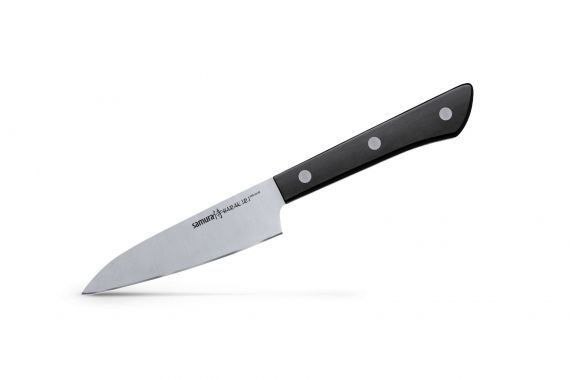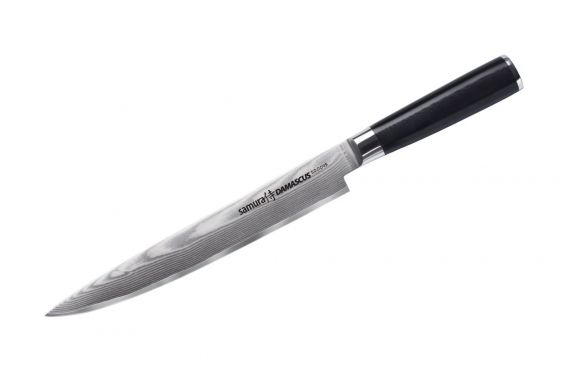Slicing Knives: Precision and Perfection in Every Cut
Slicing knives are an essential tool for anyone serious about their kitchen work. These Samura knives are specifically designed to make thin, even slices of meat, fish, and vegetables, enhancing both the presentation and the texture of your dishes. In this article, we'll delve into the design, features, benefits, and uses of slicing knives, explaining why they are indispensable in any culinary setting.
Slicing knives typically feature long, narrow blades that may have a slight curve to facilitate smooth, continuous slicing motions. The length of the blade allows for long cuts that can easily slice through large pieces of meat or fish in a single, clean stroke. This reduces the need for back-and-forth sawing motions that can tear and damage the meat.
The blades of slicing knives are often made from high-quality materials like stainless steel or high-carbon steel, ensuring they remain sharp and durable even with frequent use. Some slicing knives also feature granton edges—small dimples along the blade that help reduce friction and prevent food from sticking to the knife. This feature is particularly useful when slicing thin pieces of meat or fish, as it allows for cleaner cuts and easier handling.

Benefits and Uses
- Precision Cutting: The design of slicing knives ensures that each cut is clean and precise. This is especially important when working with delicate items like smoked salmon or roast beef, where presentation is key.
- Versatility: While primarily used for slicing meats, these knives are also excellent for preparing vegetables and fruits, making them a versatile addition to any kitchen.
- Efficiency: The sharp, long blades of slicing knives allow for efficient cutting, reducing the effort required and speeding up the preparation process.
- Preservation of Texture: Using a proper slicing knife helps maintain the integrity and texture of the meat, fish, or vegetables. This is particularly important for dishes that rely on the visual appeal and texture of thin, even slices.
Common Types of Slicing Knives
Carving Knives: Ideal for roasts and larger cuts of meat. These knives often come with a slightly curved blade to facilitate long, clean slices.
Ham Knives: Long, thin blades designed specifically for slicing cured hams. The flexibility of the blade allows for ultra-thin slices.
Fish Slicers: Often longer and thinner than meat slicers, these knives are perfect for preparing sushi or sashimi, allowing for precision cutting of delicate fish.

Maintenance Tips
To keep slicing knives in top condition, it's essential to maintain their sharpness and cleanliness. Regular honing with a sharpening steel can help keep the edge straight, while professional sharpening should be done periodically to maintain the blade's sharpness. Always hand wash slicing knives and dry them immediately to prevent rust and corrosion.
Slicing knives are indispensable for achieving precise, uniform cuts in the kitchen. Their unique design and high-quality construction make them ideal for a variety of tasks, from carving meats to slicing delicate fish and vegetables. Investing in a good slicing knife can significantly enhance your culinary skills, ensuring that every dish you prepare is presented and enjoyed at its best.
